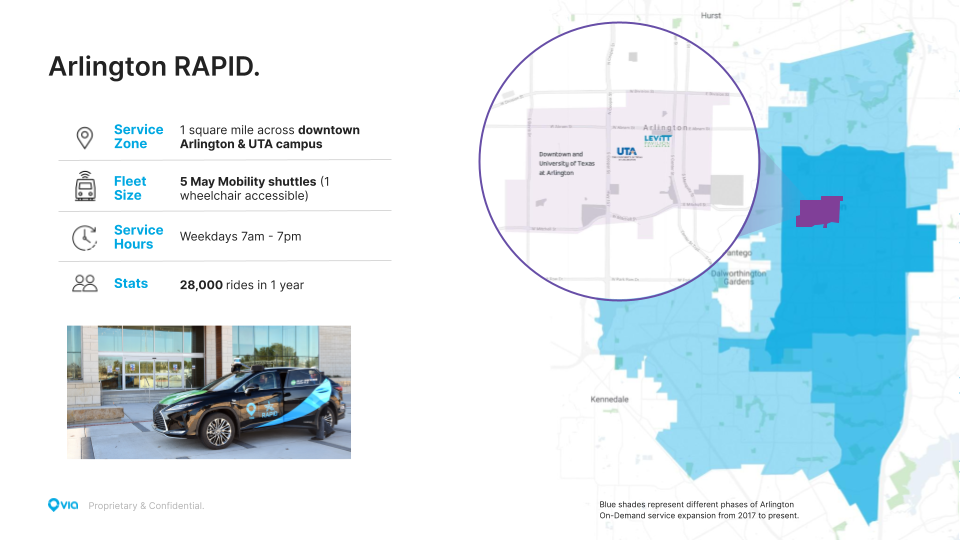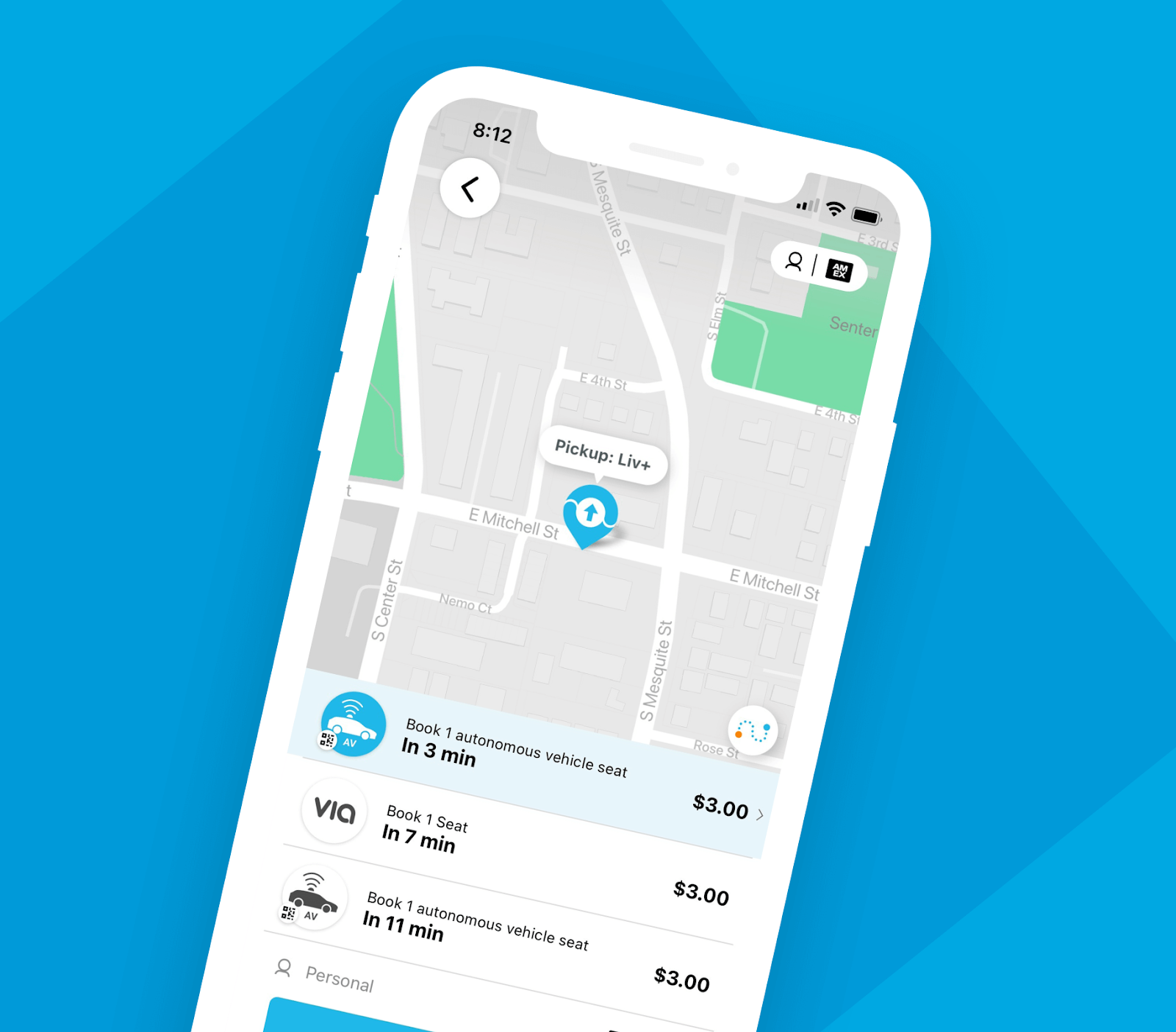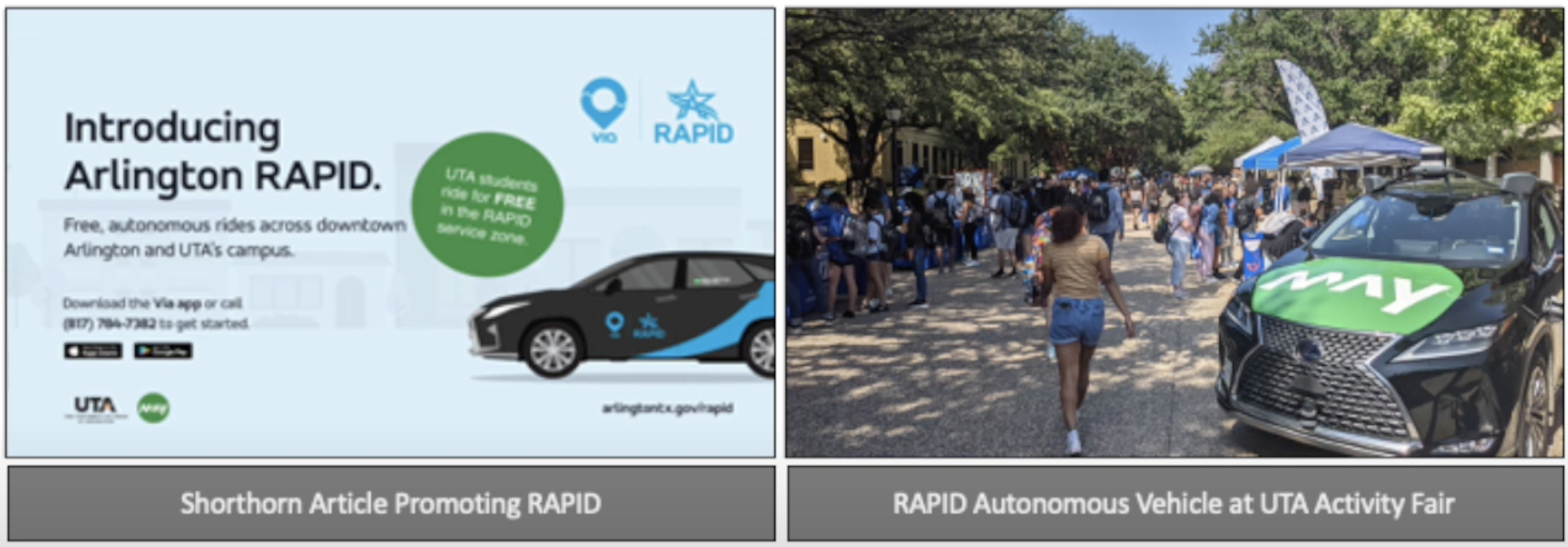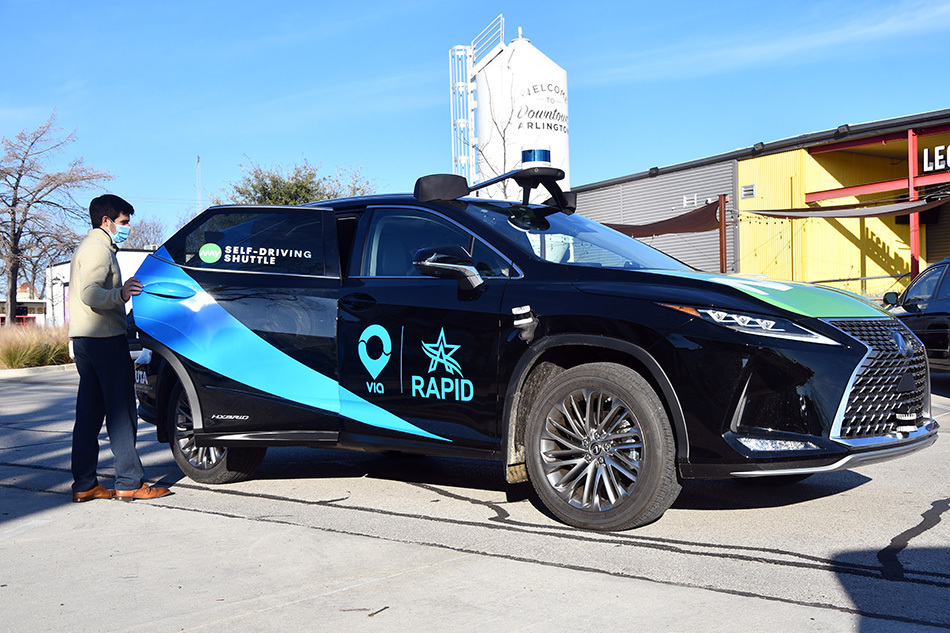When we imagine the future of transit, we see riders booking an end-to-end trip entirely on public transit, through their smartphone — on-demand shuttles, autonomous vehicles, or any other available mode that helps them get where they need to go.
Sounds pretty cool, right? Great news: it’s already happening. The City of Arlington, Texas, in the heart of the Dallas and Fort Worth region, did just that. In a recent webinar held by Partners for Automated Vehicle Education (PAVE), a few industry leaders discussed how they integrated RAPID, the nation’s first on-demand, autonomous transit service, with Arlington’s existing microtransit network. Since its launch in 2021, RAPID has delivered the same high-quality service as the community’s on-demand offering and continues to demonstrate unique value in public transit.
Speakers:
- Ann Foss, Principal Planner, The City of Arlington
- Dr. Sharareh Kermanshachi, Associate Professor, Department of Civil Engineering, The University of Texas at Arlington
- Fawna Tucker, Customer Success Manager, May Mobility
- Meghan Grela, Autonomous Mobility Lead, Via
Here are some of the biggest takeaways for cities and transit authorities looking to bring AVs to their communities and for AV technology providers interested in transit projects:
1. Use AVs to address the unique mobility needs in your community.
When deploying AV programs in local transit systems, it’s crucial to respond to the specific transportation needs and traffic culture on the ground.
Ann Foss, Principal Planner at the City of Arlington, noted that Transit planners should ensure the service design is aligned with the deployment environment: “I think it's really important to think about the use case and matching your use case to the correct vehicle and technology approach…. Do you need the ability to be on-street and go with the flow of traffic? Or is something that’s off-street in more of a campus environment better for your use case? Really matching that use case to the technology is key.”

Blue shades represent different phases of Arlington On-Demand service expansion from 2017 to the present, while purple shades represent RAPID service zone.
After successfully conducting two AV pilots, including one off-street deployment and one situated in a localized environment, the city decided to take RAPID a step further. Foss says the team envisioned phase three as integration of AVs with their on-demand service to solve real transit needs, and later secured a Federal Transit Administration (FTA) grant to explore this opportunity. “It’s the product of all these autonomous pilot learnings, but scoped within the broader city's existing public transit, ” Meghan Grela, Autonomous Mobility Lead at Via, pointed out.
Riders especially appreciate the convenience of accessing two vehicle options, both AVs and non-AVs, within one transit app and enjoy the on-demand nature of both services, added Foss. And public acceptance has proved just that — nearly 90% of travelers report they would ride again with RAPID.

Riders can book trips on both on-demand microtransit vehicles and on-demand self-driving vehicles in the citywide public transit app.
2. Community engagement is key to promoting and improving AV services.
One of the biggest challenges to testing new technology in real-world environments is getting communities to buy in — especially when it comes to AVs. Technical advancement doesn’t always translate to public acceptance, but Arlington’s solution is as effective as it is simple: give people a chance to ride.
Dr. Sharareh Kermanshachi, Associate Professor in the Department of Civil Engineering at the University of Texas at Arlington (UTA), suggests engaging different rider communities early to facilitate a successful launch. She notes that UTA formed a communication team composed of representatives from each partner in order to develop a plan to promote the service and educate riders on how to use it. Kermanshachi explains that the team organized three focus groups early on in the project. These groups — including individuals with disabilities, UTA students and faculty, and members of the public — offered feedback on the RAPID service.

The City also collaborated with UTA to host a series of on-campus events, inviting students, their families, and other Arlington residents to take a ride on an AV. Since launch, the research team has been gathering riders' feedback and using those insights for service improvement.

3. Leverage partnerships to build AV integrations and support for innovation.
In an effort to integrate an AV program into existing transit networks, cities need to work with a diverse group of stakeholders, from vehicle providers, to operators, to research institutes, to software companies. Foss recognized that incorporating expertise from the right partners throughout the process has been critical to RAPID’s success. The grant application process for the AV service is one of the best examples to demonstrate this approach to collaboration.

Photo provided by the City of Arlington.
“All partners contributed to writing the grant application. Once we were awarded the funds we worked really closely together for a hard year to get everything in place to stand up the deployment. And obviously, we coordinated really carefully on all of the marketing and education pieces,” says Foss.
On the topic of collaboration, Fawna Tucker, Customer Success Manager at May Mobility, pointed to two key components of the back-end integration that the AV company developed with Via. One is “V ia’s world-class dispatching and routing algorithm, which they’ve enhanced to accommodate the unique needs of AVs — like being able to block off certain routes that aren’t accessible by AVs, or adjusting the ETAs to the top speeds that the vehicle can travel, as well as enabling our vehicles to circulate through the service zone during periods of low demand so we could continue to gather valuable data.”
The other innovation Tucker mentions is May Mobility’s vehicle “cloud interface service,” which allows AVs to communicate with Via the same way a human driver with a mobile device would do, in a very secure manner. It also enables seamless technology integration with May Mobility's autonomous driving kit (ADK) for robust operation of key vehicle control systems.
In the end, the future of AV relies on public transit — when deployed in the right way, it has huge potential to fill service gaps and solve real-life transportation challenges. As Grela puts it: “When deployed through mass transit, AVs are democratized to the broader public. Data drawn from a large diverse rider base and mobility needs spectrum matures AV technology, so that AVs today and their future are not limited to just those who can afford private vehicles or private rides, but to everyone.”
If you’re ready to take action, and learn more about the integration of AVs in mass transit, reach out to us at partnerships@ridewithvia.com.




